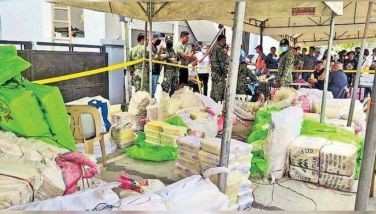Cold weather affects fish, too, says fisheries expert
DAGUPAN CITY, Philippines - – The prevailing cold weather affects not only humans but fish, too, like the bangus (milkfish) and tilapia, as it stops their spawning, slows down their growth, and makes them susceptible to diseases.
Dr. Westly Rosario, center chief of the Bureau of Fisheries and Aquatic Resources (BFAR) here, told The STAR yesterday that fish like bangus and tilapia want warmer temperature, thus they stop spawning at the onset of the cold months, starting November. They only start spawning at the start of the hot months beginning March, he said.
With weather forecasters saying that the cold months would be extended, so will the suspension of spawning of these fish species, he said. As a result, a shortage of fry supply locally produced is expected, he added.
Rosario said there is a technology used in other countries like the manipulation of water through the use of heater and artificial light because the triggering factors for spawning are generally the temperature and the photo period, which refers to the length of day and night.
The technology, although costly, is to copy the natural environment, Rosario said.
He said most bangus hatcheries are located in Mindanao but the problem is, the island is now frequented by typhoons.
He said strong typhoons used to hit Northern Luzon and although there has been good weather lately, the bangus industry is now faced again with another weather condition – the cold temperature – that has negative effects.
The solution to fry shortage is to import them from Indonesia, he added.
Rosario also said bangus grow fast in hot temperature because of high metabolic process. But if the weather is cold, their metabolism also slows down and they become sluggish.
“They are not fat now,†he said.
The cold weather, especially in shallow fishponds, is stressful to the bangus, Rosario said.
He advised fishpond operators to adjust their feeding management and wait for around 9 to 10 a.m. to feed the fish. Bangus growers normally feed their fish around 6 a.m. during normal weather conditions.
The cold weather also poses another problem in hatcheries because of a longer larval rearing period, Rosario said.
During normal weather conditions, this only takes 18 days but now this is extended, he added.
“They may spawn or lay eggs but larval rearing period will be extended and consequently, lower survival rate,†he said.
Although bangus and tilapia – which Pangasinan produces the most – are affected by the cold weather, other species like the malaga (siganid) and ulang (freshwater shrimp) are not.
Bangus are raised for 120 days for local trading but take longer for import, reaching up to five or six months, Rosario said.
Meanwhile, Greg de Vera, chief meteorological officer of the Philippine Atmospheric, Geophysical and Astronomical Services in this city, told The STAR that the coldest temperature recorded in recent times here was at 2 a.m. on Monday at 19.0 degrees Centigrade.
De Vera said the cold weather would take longer till February and the temperature might go lower.
The hottest temperature here last year was recorded on May 6 at 37.5 degrees Centigrade at the PAGASA Dagupan City station.
- Latest
- Trending































